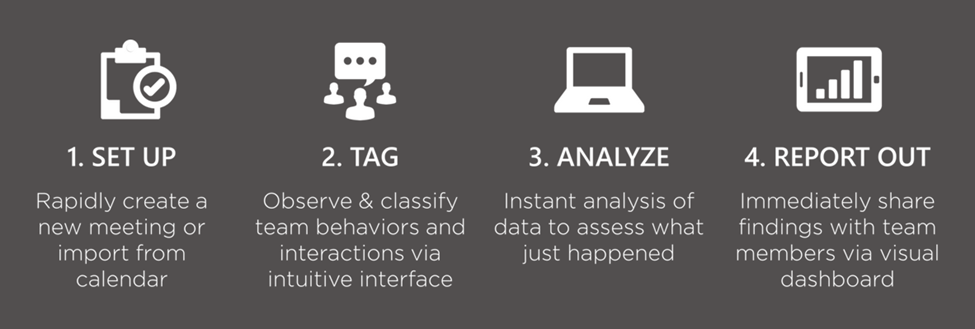What gives convolens superpowers
By Chelsea Mitamura, PhD
There are hundreds of meeting effectiveness tools and techniques out there (and you’ve probably tried a lot of them), but ConvoLens is unique. It has a super power (yes, I’m a Marvel fan) called Behavioral Analytics that helps you break through the real barrier that divides unproductive, time=wasting meetings from productive ones – the behavior of meeting participants.
Here’s what makes ConvoLens unique
It’s the only way to specifically address the biggest factor that causes meetings to succeed or fail: the interactions of people in the meeting.
Unlike other assessments, it focuses on direct behavioral observations versus self-reports or individual perceptions.
It provides insights at both the group and the individual level.
This means that you – as team leader, project manager, facilitator, consultant, or coach – can not only pinpoint what the team as a whole needs to work on, but also identify which individual participants are modeling productive meeting behavior and which ones may be holding the group back.
About that super power . . .
ConvoLens is powered by Behavioral Analytics, a way of understanding peoples’ behavior in a meeting, or any group discussion. The method was pioneered by Harvard Professor and social psychologist Robert Bales. Bales called it Interaction Analysis, and it’s been used in many different work environments for decades.
Historically, Bales’s method required recording meetings – and for the meeting observer to take a chunk of time after the meeting to integrate and analyze his or her data. With the web-based ConvoLens application, we’ve made this tracking easy to do in real time as the meeting is happening.
Are you ready to make your breakthrough?
When you use ConvoLens, you first determine which behaviors or interactions within the group are most important to focus on. (Don’t worry, we have some suggestions for that.) Next, an observer watches the group and uses the ConvoLens app to categorize individual participant’s interactions as they occur. For example, the observer might note every time a participant asks a question, advocates for a specific point of view, or interrupts team members.
The resulting data produces a picture of how the group functions.
It’s through good interaction that information is shared, problems, get solved, and decisions get made – and the best agendas or collaboration tools just can’t make up for poor interactions. If you’re ready for your breakthrough, try the only tool that lets you map these interactions quickly and in real time so you can address them. Sign up for the free ConvoLens Beta trial today.
Sign up now for the free Beta trial.


